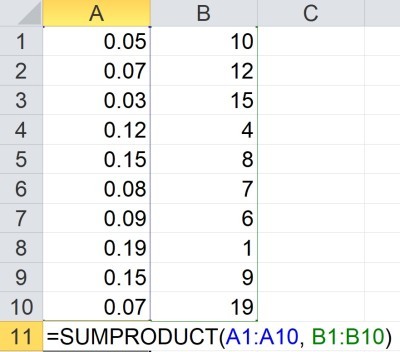Microlearning has been around for a long time, but since the internet came along, it has moved online. Many organizations use microlearning to deliver training to workers as they progress in their careers.
So, what is microlearning? Microlearning teaches with short modules (each is 3 to 10 minutes long) to optimize attention & retention. Learners can review microlearning modules during a busy workday to learn job-specific skills. Microlearning is flexible & convenient, and also less likely to overwhelm busy workers or students.
Microlearning tends to focus on just 1 or 2 learning objectives per module. That way, you can learn in bite-sized chunks and build up your knowledge over time.
In this article, we’ll talk about microlearning and how it works. We’ll also take a look at when to use microlearning and how to create microlearning modules.
Let’s get started.
What Is Microlearning?
Microlearning (or microtraining) is a learning method that teaches with short, topic-focused learning units (modules). These modules are short (3 to 10 minutes each) and focus on just 1 or 2 learning objectives.

These short modules allow learning to occur before attention wanes. Well-crafted microlearning modules also increase retention because they are interesting, interactive, or hands-on training.
The modules can be delivered on a set schedule (daily, weekly, etc.) so that learners can proceed through units to learn job skills. These modules are often incorporated into the daily routines of busy workers to make workplace training easier.
This means that a worker could go through a 7 to 8 minute module per weekday for 13 weeks, instead of sitting through one 8-hour training day.
The modules can also be on-demand, so that a learner can access as many or as few units as time allows. This approach is helpful for students who want to learn new skills for freelancing or job preparation, but are sometimes busy with midterm or final exams.
Does Microlearning Work?
Just like anything else, microlearning works when done correctly. This means that the designer needs to produce modules that are effective, and the learner needs to do the work and engage with the material.

Microlearning tends to work best for subjects that can be broken up into short parts, such as:
- Job Training (learning one aspect of the job and practicing one “microskill” per day)
- Languages (learning one verb and some of its conjugations per day)
- Math (learning one mental arithmetic trick to speed up ability and practicing it)
- Musical instruments (learning how to play one short part of a song by repetition)
- Science (learning a definition and seeing a few examples per day)

It may not be effective to use microlearning for complex concepts, or for topics that require a long time to understand the ideas. For example, advanced math theorems might take more than 5 or 10 minutes at a time to “get it”.
Why Is Microlearning Important?
MIcrolearning is important because it is convenient, approachable, customizable, and adaptable.
Microlearning is convenient because learners can access the material as needed or when there is a slow period at work. If they miss a day (or a week!), they easily start where they left off after returning to work.
Microlearning is also approachable because each module has a short time commitment. Also, each module focuses on 1 or 2 learning objectives, so there is not an overwhelming amount of information presented at once.
In addition, microlearning is customizable, since you can choose any LMS (learning management system) that suits you, or even build your own. You can define your own learning objectives, use the teaching methods you want, and make the modules whatever length you like.
Finally, microlearning is adaptable. Instead of an hour-long training video, you might have 20 3-minute videos. If one video becomes obsolete, you can record a new 3-minute video instead of re-recording the entire hour-long video.

This makes it easy to update your training over time as learning objectives change.
When To Use Microlearning
There are several situations when you might want to use microlearning in your organization:
- If you want to train new hires and get them up to speed gradually (you can provide interactive training after work hours to speed up skill acquisition).
- If you want to develop talent within your organization (standout performers can go through microlearning modules to learn the technical or leadership skills required for the next level).
- If you want to integrate training or continuing education into parts of the workday (for example, downtime or slow hours).
- If you want to deliver learning by email or phone instead of by book, desktop computer, or in-person seminar (can be done at work or after work during off hours)

For example, if you want to use microlearning to train a data analyst and you need to teach new skills in Excel, you could break the necessary skills into topics (each topic could have one or more short modules):
- Data Integrity (checking and verifying the source)
- Sorting Data
- Lookups (you could explain the various inputs for the VLOOKUP function in separate videos)
- Pivot Tables
- Graphs (line graphs, bar graphs, etc. and when each is appropriate)
- Statistical Functions (mean, standard deviation, etc.)

You can start at a high-level and break learning objectives into smaller pieces until you have topics that are small enough for 3 to 10 minute videos.
How To Create Microlearning
To create microlearning, you will need:
- Learning Objectives (what skills and knowledge do you want people to have? For example, you want a new hire to have a certain baseline of skills in Microsoft Word, Excel, and PowerPoint that are commonly used in your organization. You should list out those skills one by one.)
- Activities (which activities will help learners to gain the skills you listed above? Maybe you make a screen-capture video showing how you or another employee uses those skills in practice. For example, you make a video showing how you use Excel to sort data and then filter for what you want to find.)
- Assessments (how will you find out if learners have developed the skill and achieved the desired skill level? For example, you could ask them to sort and filter a similar list of data in Excel, create a quiz to test knowledge, or create a game that requires use of the skill).
- Delivery (how will you deliver the content to learners? For example, you can material daily by text or email, provide links to a URL or YouTube video, or host on a course platform or LMS such as LMS Canvas, Blackboard, TalentLMS, or Udemy.)

As you design and develop microlearning, you will need to think carefully about what skills you want learners to achieve. Think about how you or others learned the skills (videos, documentation, tutorials, etc.), and decide if that is the best way to learn.
You might want to provide more than one option (video, games, etc.) per module. Some of the presentation methods you can use include:
- Text
- Audio clip (podcast form?)
- Short video (YouTube, Vimeo, or other platforms)
- Flashcard
- Infographic
- Map
- Table
- Graphs or chart
- Vocabulary & definitions
- Job aid
- Interactive VR/AR training exercises (virtual reality or augmented reality)

Keeping each module short will allow learners to focus for the entire time, which increases retention.
How Long Should Microlearning Be?
There is no rule, but microlearning modules should probably be no longer than 10 minutes. Depending on the topic, a guideline might be:
- 1 to 2 minutes for easy/brief topics
- 3 to 4 minutes for medium topics
- 5 to 7 minutes for long topics
- 8 to 10 minutes for difficult topics
Don’t limit yourself though – if a module needs to be 11 minutes long, then that is ok. You might also be able to find a way to split it into two or more parts instead.

Be creative and remember that microlearning is meant to be convenient and effective for learning. It is not meant to be defined by arbitrary time limits.
How To Assess Microlearning
There are lots of ways to assess microlearning, such as with:
- Job test – this allows a worker to take skills learned from modules and apply them on the job.
- Mini games – an entertaining way to apply the ideas, knowledge, or skills learned in the prior modules (for example, a math learning game that asks for arithmetic problems to be solved within a time limit to progress)
- Short quizzes – an assessment with 6 to 10 questions that take 30 to 60 seconds each would fit easily into a single module. Based on incorrect answers, you can tailor a review process to go back and learn what was missed.
- Written response – this is a way to see for yourself how learners are progressing and how deep their understanding is.

Again, be creative and remember that the goal is to apply the skills learned in the microlearning modules. Try to combine skills from multiple modules in a way that makes sense for the job or the overall theme of the microlearning course.
Conclusion
Now you know what microlearning is and how it can help you to learn new skills (in a convenient and approachable way). You also know how to get started with developing microlearning if you want to teach skills to others.
I hope you found this article helpful. If so, please share it with someone who can use the information.
Don’t forget to subscribe to my YouTube channel & get updates on new math videos!
~Jonathon

